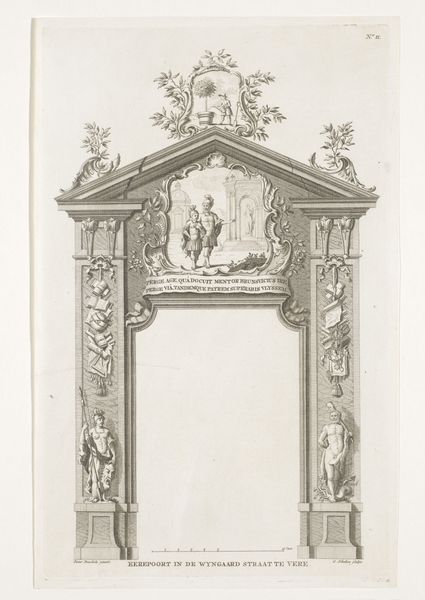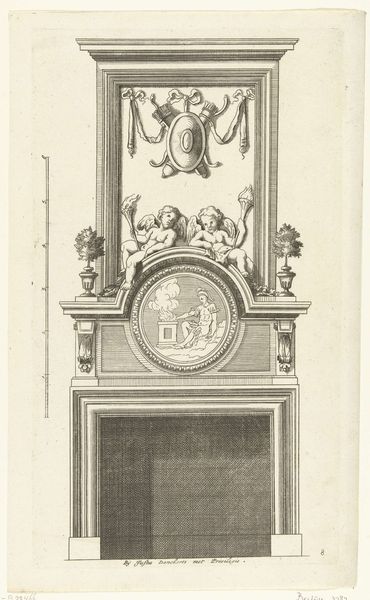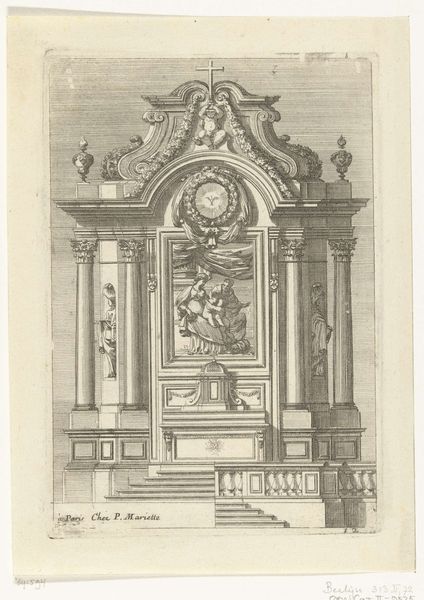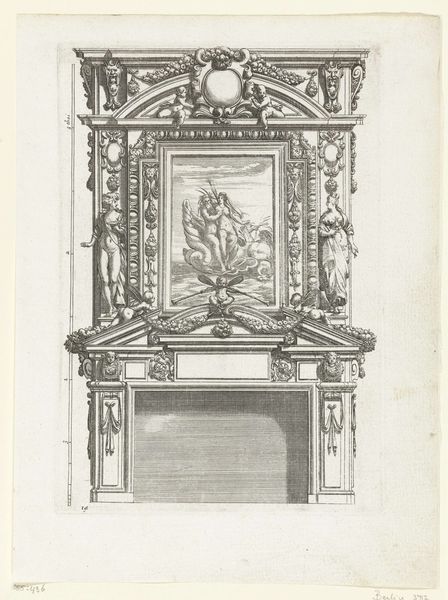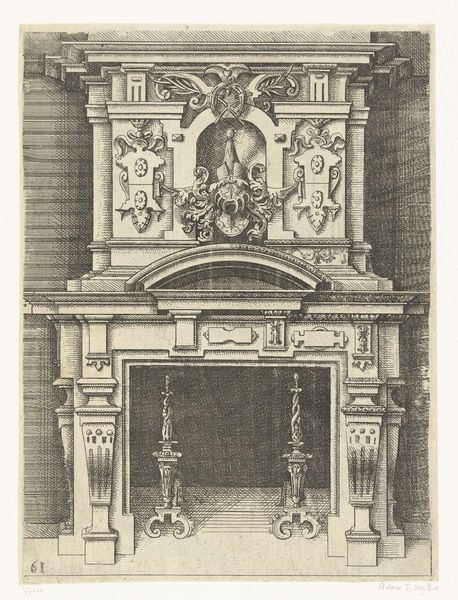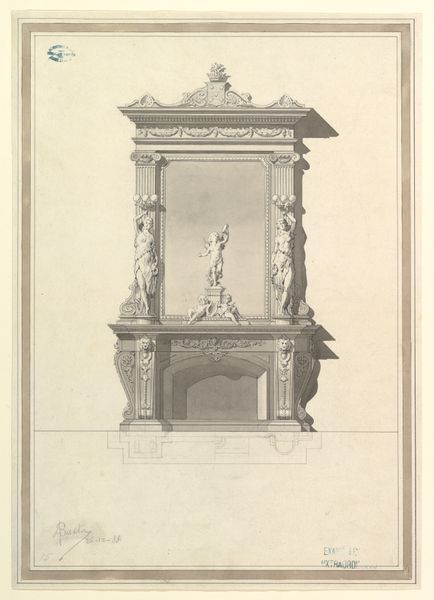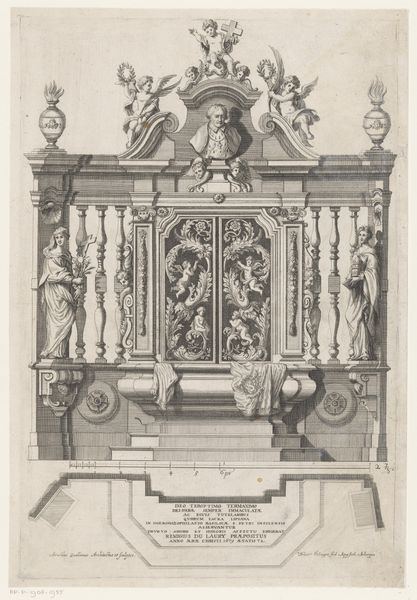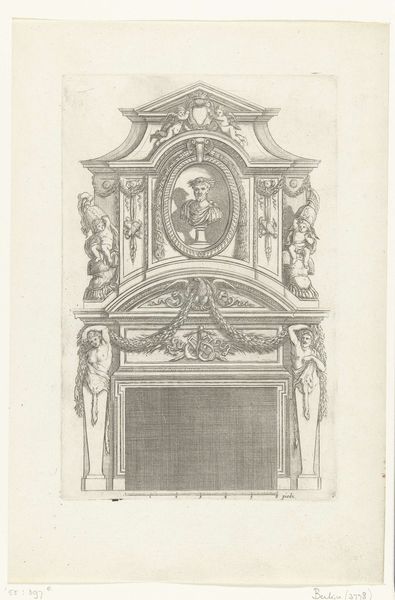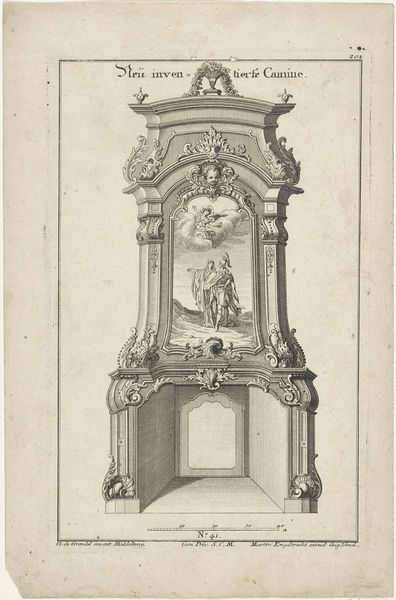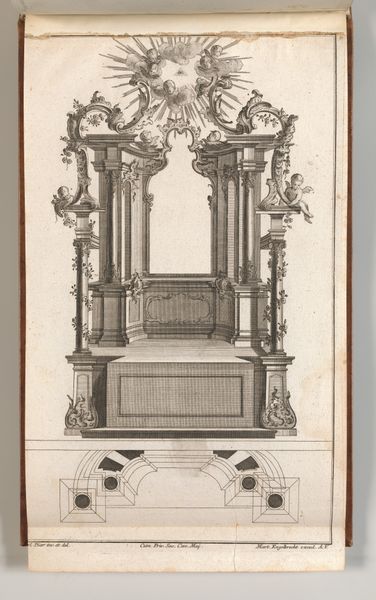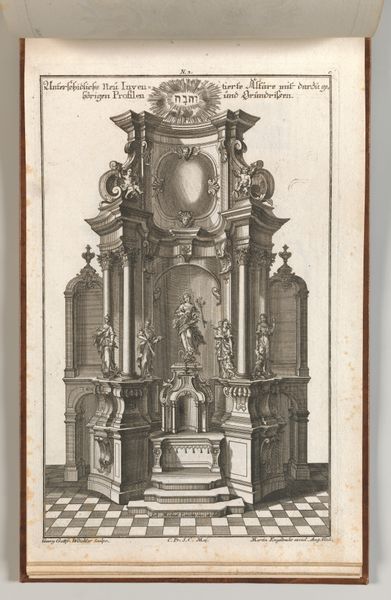
print, engraving, architecture
# print
#
decorative-art
#
engraving
#
architecture
#
realism
Dimensions: height 418 mm, width 290 mm
Copyright: Rijks Museum: Open Domain
Editor: Here we have "Onderboezem met achthoekig schilderij", created sometime between 1866 and 1900 by J. Herman. It appears to be a print, maybe an engraving? It depicts an elaborate mantelpiece. The detail is just incredible! What catches your eye in this piece? Curator: Well, as a materialist, I see a confluence of craft and capital ambition in this image. We have, on one hand, the labor-intensive techniques of engraving, rendering such intricate ornamentation. Consider the number of hours spent etching those fine lines. Editor: Right, it must have taken ages. Curator: But consider what it depicts: a fireplace design, presumably for the wealthy. The materials referenced – the stone, the possible bronze accents – all speak to privilege and a desire to display it. And this print acts almost as an advertisement. Editor: So, it’s about showing off not just wealth, but also craftsmanship as a commodity? Curator: Exactly! The print itself becomes part of that economy. It circulates ideas, fuels desires. Look at the implied process: design, execution in print, dissemination, and *then* hopefully the final fireplace constructed. Every stage embedded in a web of social relations, material constraints, and aspiration. What kind of person might buy into this? Editor: Someone with, as you mentioned, some capital and an aspiration for decorative art. Maybe it speaks to a rise of the bourgeoisie who seek elevated displays of their position? Curator: Precisely. Considering labor helps understand value, doesn't it? Editor: Definitely! I never thought of prints in that light before - more than just the image but also the material context and work behind its creation. Curator: Indeed! Analyzing the materials and means of production transforms how we understand art.
Comments
No comments
Be the first to comment and join the conversation on the ultimate creative platform.

